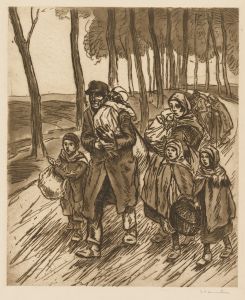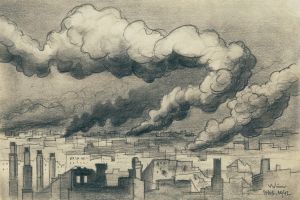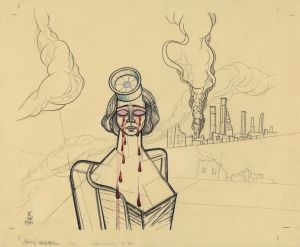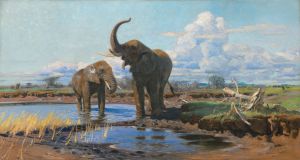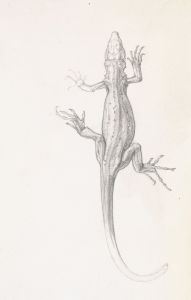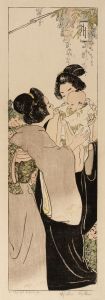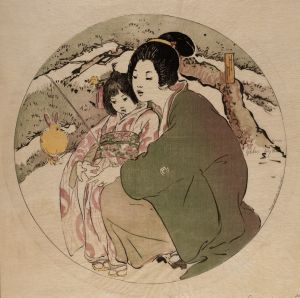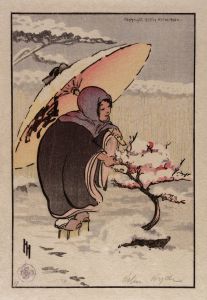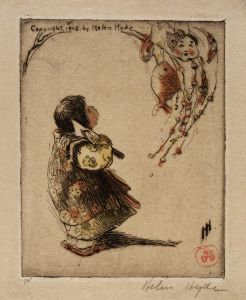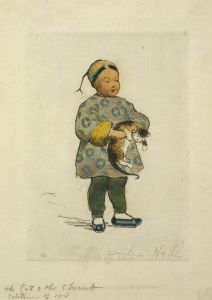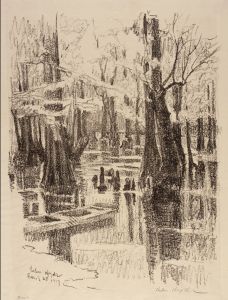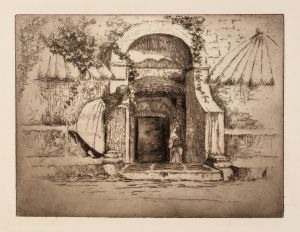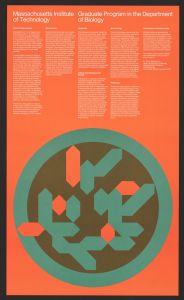
Survival Of The Fittest
A hand-painted replica of Helen Hyde’s masterpiece Survival Of The Fittest, meticulously crafted by professional artists to capture the true essence of the original. Each piece is created with museum-quality canvas and rare mineral pigments, carefully painted by experienced artists with delicate brushstrokes and rich, layered colors to perfectly recreate the texture of the original artwork. Unlike machine-printed reproductions, this hand-painted version brings the painting to life, infused with the artist’s emotions and skill in every stroke. Whether for personal collection or home decoration, it instantly elevates the artistic atmosphere of any space.
Helen Hyde (1868–1919) was an American artist known for her work in color woodblock printing, a technique she mastered during her time in Japan. One of her notable works is "Survival of the Fittest," which exemplifies her skill in this medium and her ability to blend Western and Eastern artistic traditions.
Helen Hyde was born in Lima, New York, and later moved to San Francisco, where she began her formal art education. She studied under various artists, including Emil Carlsen and Ferdinand Richardt, and later attended the Art Students League of New York. Her artistic journey took a significant turn when she traveled to Europe and then to Japan in 1899, where she immersed herself in the study of Japanese woodblock printing, or ukiyo-e.
"Survival of the Fittest" is a woodblock print that reflects Hyde's deep appreciation and understanding of Japanese art and culture. The piece showcases her ability to capture intricate details and her keen observation of everyday life. Hyde's work often depicted scenes of women and children, and "Survival of the Fittest" is no exception, portraying a moment that is both tender and telling of the human condition.
In this print, Hyde employs a delicate color palette and precise lines, characteristic of the ukiyo-e style. The composition is carefully balanced, with attention to the interplay of light and shadow, which adds depth and dimension to the scene. Hyde's technique involved carving her designs into woodblocks, inking them, and then pressing them onto paper, a process that required both artistic skill and technical precision.
Hyde's time in Japan was instrumental in shaping her artistic vision. She studied under the Japanese master printer Emil Orlik and was influenced by the works of Katsushika Hokusai and Utagawa Hiroshige. Her dedication to mastering the woodblock printing technique earned her recognition both in Japan and the United States. Hyde's prints were exhibited widely, and she became a member of the prestigious Société de la Gravure en Couleur in Paris.
"Survival of the Fittest" is a testament to Helen Hyde's ability to bridge cultural divides through art. Her work not only reflects the aesthetics of Japanese art but also incorporates elements of Western artistic traditions, creating a unique and harmonious blend. Hyde's prints are celebrated for their beauty, technical excellence, and the way they capture the essence of the subjects she portrayed.
Helen Hyde's contribution to the art world extends beyond her prints. She played a significant role in introducing Japanese woodblock printing techniques to Western audiences, inspiring future generations of artists. Her legacy is preserved in various collections, including the Library of Congress and the Smithsonian American Art Museum.
In summary, "Survival of the Fittest" by Helen Hyde is a remarkable example of her mastery in woodblock printing and her ability to merge Eastern and Western artistic influences. The print stands as a significant piece in the history of art, reflecting Hyde's dedication to her craft and her unique artistic vision.





